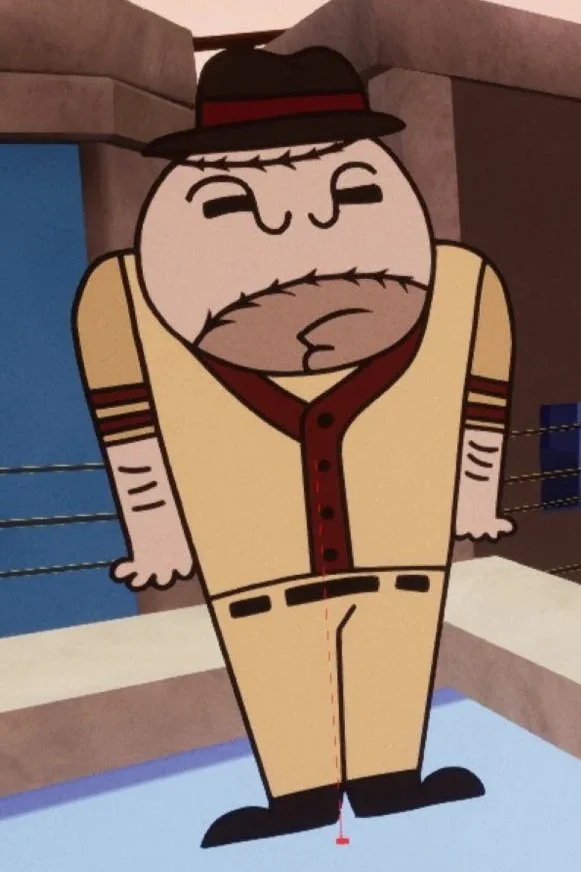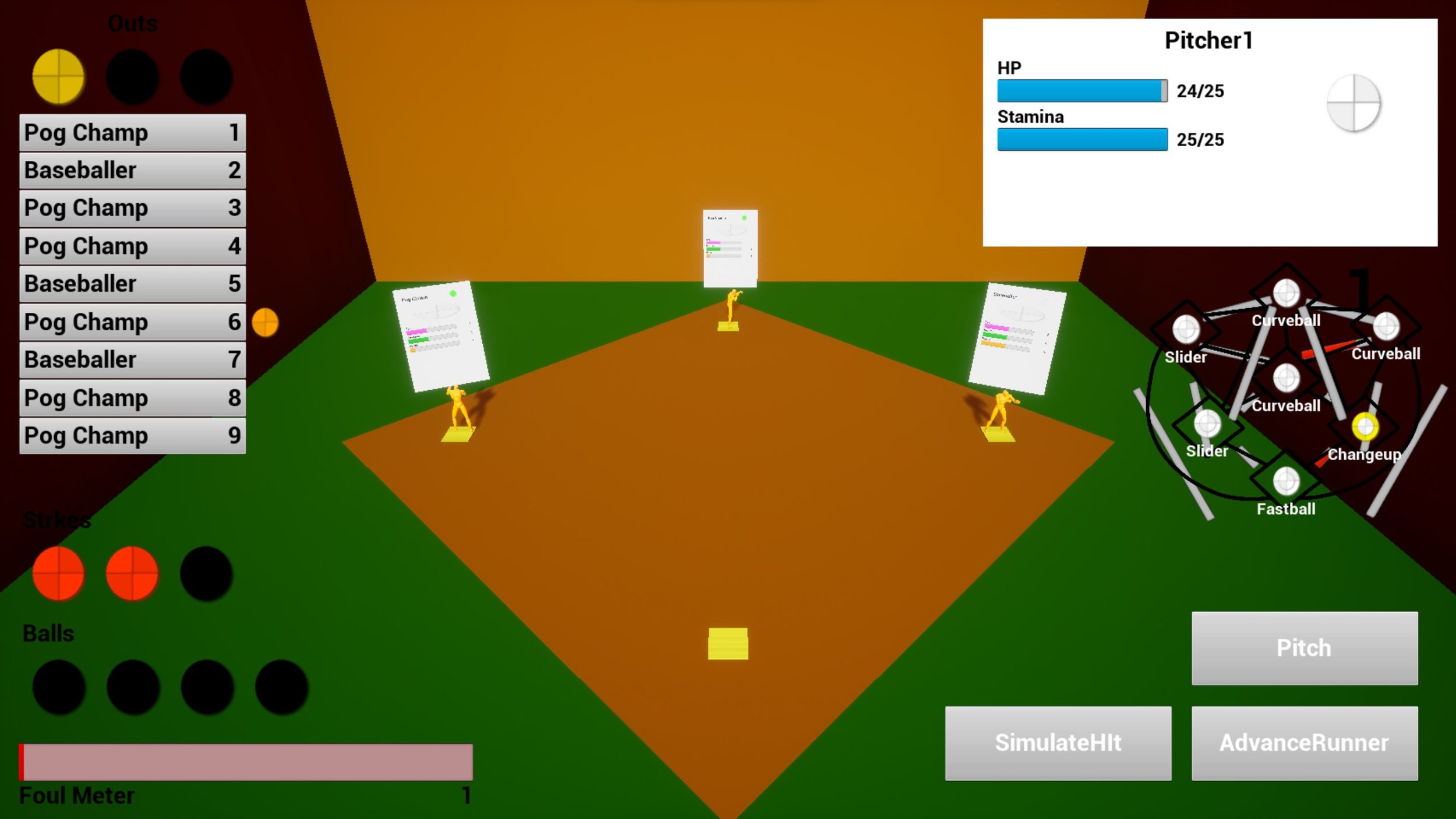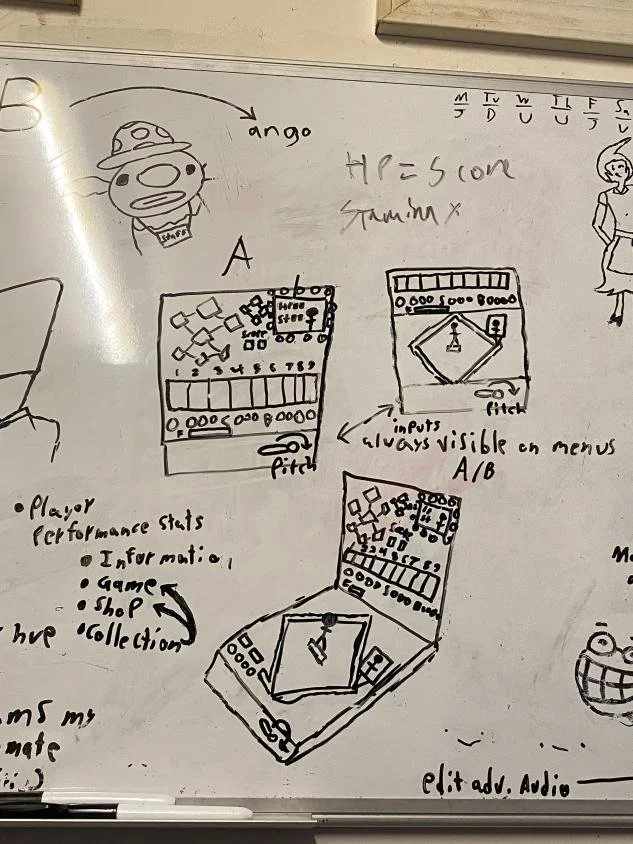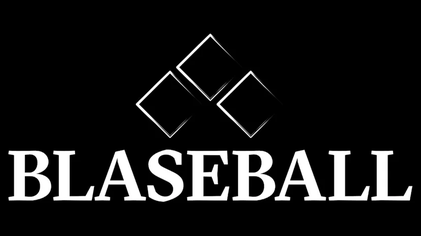Part of You is a comedy puzzle adventure game about finding your lost identity. The game is heavily inspired by the old school LucasArts point and click games from the 90s. My personal role on the team was a lot of different things: programmer, project manager, puzzle designer, & social media person. It’s been one of my favorite projects I’ve gotten to work on, turning somebody else’s vision into a reality, all while sprinkling my own flourishes throughout the identity of the project.
The core mechanic of the game is copying, pasting, and rearranging facial features from all the different characters to solve puzzles and alter their moods. As development went on, the focus of the game became taking this core idea and expanding it, giving players opportunities to use the tools and facial features in a variety of different ways to give players more freedom and new types of puzzles for them to solve. At it’s core though, the game is about players having fun with the toys that allow them to make goofy faces and interact with everything in the world, giving them a sense of discovery and ownership of the world. We really wanted the player to think “What if…” in every aspect of the game while still staying true to our adventure game roots.
At it’s core, the driving philosophy of Part of You was simple: make the toy fun. Inspired largely by the point and click adventure games made by Humongous Entertainment, the goal was to have every inch of the world be a new element players could interact with. Using their tools in unexpected ways and really making the small play environment we had come alive, jam packed with toys for players to have fun with and laugh about. Every time we came up with a toy we would design it for a variety of different use cases, from the most casual interactions to the more hardcore min-maxers.
BUILDING A PLAYGROUND
GETTING RID OF BARRIERS
As we worked on the game, we wanted to make sure that our thinking about adventure games wasn’t only rooted in the past. Conventions about what players are willing to put up with have changed wildly, in the last 20 years, most gamers have come to expect a little more guidance on the worlds they are diving into. Long gone are the days of needing to keep a pad of paper and a pen next to your keyboard as you traverse large unexplored worlds. Because so many of our key inspirations came from a time when this was still the expectation, we had to take extra special care to make sure players had enough guidance and didn’t feel abandoned by our game.
Deck Building Minigame
One of the reoccurring conversations we had while building part of you was a desire to make the world feel alive. We knew from the very start that creating a living breathing environment that players wanted to spend time in was going to be key in folks sticking around for the story and to play with the core toys in the game. We also knew that our capacity to make tons and tons of 3D assets to populate the world was going to be limited, we didn’t have the team capacity to really spend hours and hours on props, so we needed to come up with ways of making the world feel lived in. Part of this was sound, but another part of this was making every corner of the game feel like there was something to think about or interact with. Meeting after meeting would result in us referencing the old Humongous Entertainment games.
Every environment or screen had lots of visually interesting things to look at, but more importantly, as a player you could click on anything that was on your screen and there was a very strong possibility that there was a little animation or sound effect that would play when you did. It wasn’t anything that furthered the plot or story, but it was something that would be a small reward for exploration. We knew that Part of You was going to need a lot of this to have lasting power.
Crackerjack DeMaggio
Oddly enough, even before the Baseballer 3000 was a concept, this guy was in our game. He represented an organized crime group called the baseball mafia and pulls you aside about halfway through the game to “wack some balls” a joke that turned into a batting cage minigame. Though this content was cut for the final game, crackerjack still remained one of our favorite characters. We knew he should probably play a bigger role than just a bit character to deliver a tortured & elaborate pun, but we didn’t really know what that was going to be.
Baseball Cards & Collectibles
Change of Plans
So we had trading cards. Trading cards that did nothing. They didn’t give players any reason to collect them other than enjoying their collection growing in size. I wanted more. One of our hopes for Part of You was a game that would appeal to a more casual audience, but deliver more depth than first meets the eyes. Give players a toy to mess with and then give them reasons to sink their teeth into small segments of the game. It was around this time that a few things happened…
Very early on in our process, my partner in crime had floated a card collecting mechanic that they felt players would really latch onto. As somebody who isn’t really into collectibles, I was skeptical immediately. Why would somebody want to collect an item that gave them no progression, no in game rewards, and no social benefit? I was immediately proven wrong as when asking the broader team, every single other person responded enthusiastically to the idea. They wanted trading cards. Fortunately, there was already a lore appropriate reason for these cards to exist: An in world census project that resulted in trading cards being made of all the characters. Implementation of this system began immediately.
Arclight Rumble was announced and with my pinball obsession, youtube decided to start serving me all kinds of videos about old electromechanical arcade games. Suddenly a few ideas clicked and a possible path forward emerged for our trading card system. At the time, we had decided to take a step back from working on the core of the game to focus on pitching to publishers. Publishers had told us to present a few versions of our pitch for the game, a minimum viable product and a version of the game that had all our wants in it. Because of this, and in an attempt to prove to publishers that we could get a product out the door, we had decided to focus on a bunch of small prototypes that could be slotted into the game but released on their own as proof that there was interest in the world and proof that our team could release a project. All of these things came together in what would become the Baseballer 3000 minigame.
Fantasy Sports
Strat-O-Matic is a fantasy baseball game that has its origins in the 60s. The idea of Strat-O-Matic is to be able to simulate baseball games with your favorite players by using their stats and a dice rolling resolution mechanic. Players would collect cards, assemble teams, and pit teams they created against each other. As a game, it predates virtually every other version of fantasy sports that exist and is still played today by baseball stat heads.
We knew our target audience weren’t exactly sports historians, but at the time, a different game was taking over the internet by storm…









